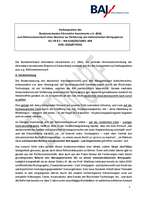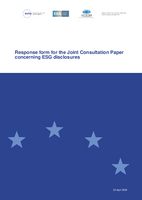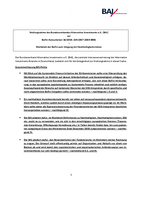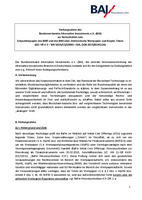Bundesverband Alternative Investments e.V. (BAI)
In addition to the specific and direct regulation of the fund industry through AIFM Directive, UCITS Directive, ELTIF Regulation, EuVECA Regulation, and EuSEF Regulation, there are a multitude of other regulatory areas relevant to this industry, e.g. related to market infrastructure, trading and distribution activities or related services.
These include, in particular, the European financial markets directive MiFID II (together with the MiFIR Regulation), which also contains the relevant regulations on algorithmic or high frequency trading, the European market infrastructure regulation EMIR, which deals with requirements for the parties to derivative transactions, the regulation of securities financing transactions through the SFTR Regulation, the CSDR Regulation for the organisation and supervision of central securities depositories, or of course the European short selling regulation, which came back into focus in the Corona crisis and was subsequently adapted accordingly.
MiFID II/MiFIR
With MiFID II and MiFIR, the EU is moving closer to the goal of creating a capital markets union. The EU capital markets are being further integrated and made more transparent.
The German legislator has largely implemented MiFID and the effects of MiFIR in the German Securities Trading Act (WpHG) as part of the Second Financial Market Amendment Act. Other capital market laws such as the Stock Exchange Act (BörsG) and the Banking Act (KWG) were also amended.
Most recently, an amendment through the MiFID/MiFIR review came into force on 28.03.2024. There is a transitional phase of 18 months until 29.09.2025; in some cases, no adjustment of Level 2 texts is required, meaning that the new regulations came into force immediately. ESMA has issued a statement to clarify this. The German legislator also still has to react with its implementation.
Directive - Text
ESMA’s interactive MiFID II page with links
Regulation - Text
ESMA’s interactive MIFIR page with links
MiFID/MiFIR-Review
ESMA's information page on the changes and implementation of the MiFID/MiFIR review
Short Selling
The EU introduced the Short Selling Regulation in order to harmonize the various measures taken by member states with regard to the risk to the market from short selling.
The reporting threshold of 0.1% of the issued share capital set during the coronavirus crisis expired on March 19, 2021. With Delegated Regulation (EU) No. 2022/27, this reporting threshold was permanently introduced from 31.01.2022 on the recommendation of ESMA with the amendment of Art. 5 of the EU Short Selling Regulation.
Legal basis
EU Regulation on short selling
Leerverkaufs-Anzeigeverordnung (LAnzV)
More information
ESMA Decision of September 17 2020
Decision requiring net short position holders to report positions of 0.1% and above
Algorithmic trading and high frequency trading
Algorithmic trading and high-frequency trading refer to trading in financial instruments using automatic computer algorithms with no or limited human intervention. Such trading systems are subject to special regulations in order to ensure their security and resilience as well as monitoring and thus to limit the risks they pose to the orderly market, for example through erroneous orders. In MiFID II, Art. 4 in Para. 39f and Art. 17 concern algorithmic trading.
MiFID II was implemented in this respect in the KWG, BörsG and WpHG
Legal basis
Art. 4 MiFID II text
ESMA’s interactive MiFID II page with links
Art. 17 MiFID II text
ESMA’s interactive MiFID II page with links
More information
EMIR
EMIR subjects standardized OTC derivatives to a clearing obligation in order to ensure transparency and thus monitoring and security of the market. As an exception, intragroup transactions in particular may not be subject to the clearing obligation.
In Germany, the WpHG has been adapted to EMIR.
ESMA’s EMIR page on reporting, technical standards and further informatoin
SFTR
The SFTR builds on the EMIR concept and creates transparency in the area of securities financing transactions through notification and reporting obligations to monitor risk and combat shadow banking.
The German legislator has largely incorporated the requirements of the regulation into the German Investment Code (KAGB).
Legal Basis
Regulation text
ESMA’s interactive SFTR homepage with links
More information
CSDR
In recognition of the systemic importance of central depositories for securities, the CSDR has removed obstacles to cross-border transactions through harmonization, created a register of authorized depositories and harmonized the requirements.
ESMA’s interactive CSDR page with links





